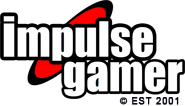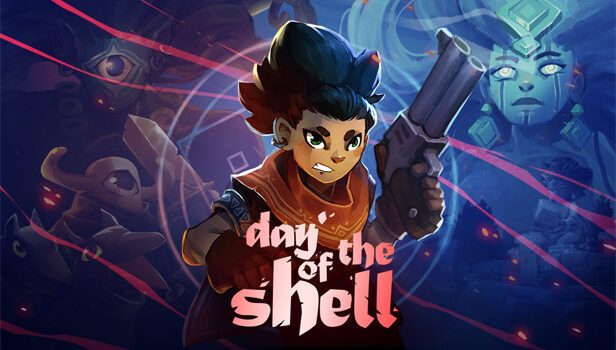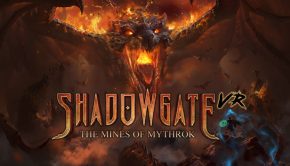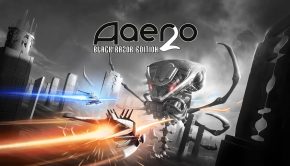Day of the Shell Review (PS5)
Summary: Day of the Shell is a fast-paced tactical roguelite where each turn is executed with a single click, offering streamlined strategy in a crumbling, god-cursed world. Players control a lone huntress traveling across fragmented islands, battling monsters and collecting upgrades in a quest to destroy the Shell, a destructive crystal born from divine irritability. With minimalist mechanics, evolving enemy encounters, and light progression systems, the game offers quick, puzzle-like skirmishes, but struggles with long-term variety and replayability.
3
Tactical Tempo
Fight against the destruction of the gods in this game where every turn matters! Day of the Shell is a stripped-down tactical roguelite with a clear “one click, one turn” mechanic, developed by Duper Games, published by Goblinz Publishing, and released on July 29th of 2025. This minimalist approach to strategy is supported by a world both fantastical and desolate; gods have shattered the world, leaving behind scattered islands teeming with monsters, hazards, and fragments of what once was. You play as a lone huntress, armed with only a revolver (or shotgun, or bow), setting out on a path to challenge divine wrath and ultimately destroy the Shell, a corrupted crystal of chaos born from jealousy and fear. At first glance, the premise is engaging, the presentation is crisp, and the mechanics are promising, but as with many roguelites, Day of the Shell walks a fine line between simplicity and repetition, and it doesn’t always land on the right side.
The story is simple, but conceptually rich. It’s about a mythology of divine intervention gone wrong. The gift of a blue crystal from a benevolent goddess to humankind sparks progress, but also envy among the other gods. In retaliation, they manifest the Shell, a red crystal of ruin that ultimately brings devastation. The last hope for the land lies in a lone warrior, the huntress. The huntress’s mission to right this cosmic imbalance provides a clear narrative goal, though much of the storytelling is backgrounded and sparse during gameplay. The mythos is compelling enough to establish mood and stakes, but outside of the brief introduction, it rarely deepens or evolves across a run. For a game with such a striking setup, the narrative fades too quickly into abstraction.
Gameplay is where Day of the Shell makes its most confident statement. The “one-click, one-turn” system is elegantly implemented, allowing each action to be immediate and intuitive without sacrificing strategic tension. Every tile matters. Positioning, cover, enemy type, and line of sight must all be considered before committing to a move or attack. The interplay of terrain and destructible environments is particularly clever, crumbling pillars can shift the flow of battle, while hazards like mud tiles create risk-reward scenarios. Different weapons encourage varied approaches, with each having its own strengths and limitations, though in practice, they often feel more alike than different due to limited modifiers. What works best is the moment-to-moment rhythm: easy to pick up, deceptively intricate, and fast-paced.
That said, the game’s roguelite structure doesn’t hold up as well over time. While the core mechanics remain engaging, the layers meant to support replayability like meta-progression, run-specific upgrades, and enemy variety, are underdeveloped. Permanent upgrades amount to small percentage boosts that feel unrewarding, and the weapon progression is sluggish and grind-heavy, locked behind a bottleneck of boss currency. Perks and relics during runs offer some build diversity, and there’s fun to be had in creating synergies (like combining item drop perks with passive shields), but RNG has an outsized influence on success, especially early on. Some runs are over before they start, not because of player error, but because of unbalanced enemy placement or a bad draw of upgrades.
Despite its strengths, Day of the Shell struggles to sustain interest past the initial hours. The limited pool of weapons, enemy types, map layouts, and upgrade paths quickly exposes a lack of variety. Once you’ve found the most efficient perks and builds, subsequent runs start to feel similar. While short bursts of play can be addictive, thanks in part to how quickly you can jump into a new run, the loop doesn’t evolve meaningfully over time. Challenge stages and optional portals try to add spice, but they rely too heavily on luck and rarely feel balanced or rewarding enough to chase. The difficulty curve is erratic, and the absence of meaningful procedural generation in level structure makes failure feel more frustrating than instructive.
Visually, Day of the Shell strikes a distinctive tone. The island environments are stylized and colorful, with a clarity that supports the tactical nature of the game. The character and enemy designs lean more functional than evocative, but animation and feedback are sharp. The game benefits from an art direction that values readability without sacrificing personality. Audio design complements the experience well: the soundtrack adapts to the game’s pacing, with subdued melodies during downtime and more intense cues in battle. Sound effects are satisfying, giving weight to each decision and action without overwhelming anything.
I did come up against moments where the music or ambience noises would just stop completely, leaving me in an uncanny battlefield of just grunts and gunfire. The game also has a tendency to freeze up after some turns as if it can’t keep up with the action and it’s trying to understand what’s going on. I also found actually navigating the world to be cumbersome. Since everything is locked on a grid system, moving around to get where you need to can bring unwieldy results. Too often, I would select a tile I intended to move to, only for the cursor to jump unpredictably to a different tile, or even onto an enemy, causing me to lose all strategic advantage and, more often than not, the entire encounter, forcing me to restart my run from the beginning.
Final Thoughts?
Ultimately, Day of the Shell is a compelling idea that doesn’t fully realize its potential. It nails its core concept of accessibility and snappy tactics, but falters in the systems meant to support long-term engagement. For players seeking a bite-sized, brainy strategy game to play in short sessions, there’s a lot to like here, but those hoping for deep progression, rich variety, or meaningful replayability may find themselves burning out quickly. It’s not a bad game by any means; it’s just one that feels like the first draft of something greater. With more content, balance tweaks, and expansion of its mechanics, it could become something special. As it stands, Day of the Shell is a promising and modest experience that is unique, but not unforgettable.


















